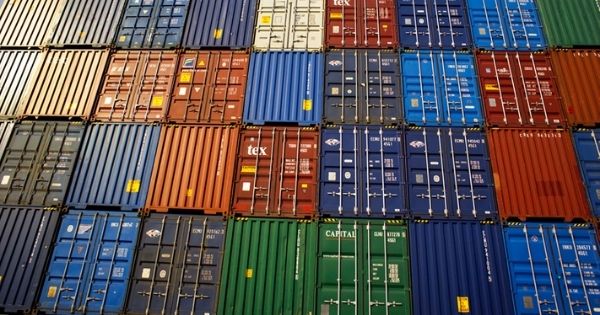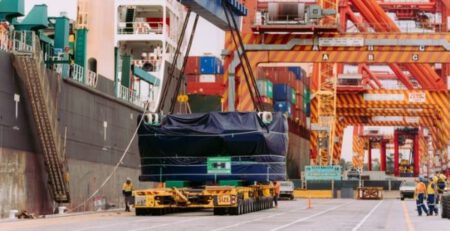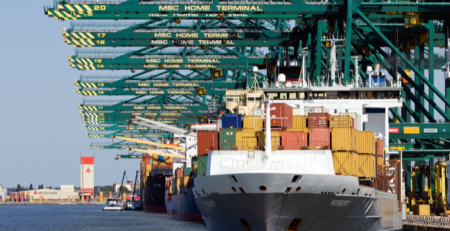Container shipping rates soar
Global container shipping rates have risen to record levels due to spike in storage demand in the United States and Europe, shortage of containers at export hubs and changes in shipping flows due to the Corona virus pandemic.

Shipping sources said that global container shipping rates have risen to record levels due to spike in storage demand in the United States and Europe, lack of containers at export hubs and changes in shipping flows due to the Corona virus pandemic.
Freightos Baltic Global Container Index (FBX), the average of the 12 major global container shipping routes, rose to USD 2,359 per 40-foot container (FEU) this week, the highest record and up 30% as of July 1.
“The spike is driven by very high demand for container freight since July, driven by post-lockdown restocking, limited air-freight capacity, incremental demand for stay-home goods and PPE (personal protective equipment), and a severe shortage of containers”, said Hua Joo Tan, container shipping market analyst at Liner Research Services.
According to Freightos data at Refinitiv Eikon, the costs of transporting a container from China to the US East Coast, a key global retail market, hit USD 4,750 this week, up 42% from July and is a new record.
Shipping rates from China to the US West Coast increased by nearly 50% since July 1, to USD 3,878 per container.
“The transpacific route from Asia to the U.S. has seen the strongest demand surge, with volumes growing by between 10% to 20% more than last year, but we are seeing the high demand spill over into all trade-lanes currently”, Tan added that demand is expected to remain until the first quarter of 2021.
The Harpex Shipping Index, which tracks container shipping rates, has more than doubled since July to 947 points, the highest level since September 2008.
In addition to the increase in inventory, container shipping rates have also increased due to orders from companies that normally transport goods by passenger planes but now have to use container ships while much of the global air fleet remains grounded.
The uneven distribution of containers around the world due to the interruption of logistics channels by the Corona virus lockdown has also increased freight rates.
While container costs are expected to remain high until the end of 2020, a developing pandemic situation in major economies could dramatically change the trajectory of freight rates next year.
“Even though the carriers are claiming to be booked solid all the way to Chinese New Year, we should not forget just how quickly all the U.S. and European importers cancelled already existing purchasing orders with the factories back in March/April”, said Lars Jensen, managing director at SeaIntelligence Consulting.
According to Jensen, if the pandemic worsens and leads to tighter lockdowns and deeper recession, consumers will likely cut spending as unemployment increases, reducing demand for container shipping.
Jensen said that demand for shipping containers could also decrease if the pandemic is quickly controlled and consumers begin to spend more on services such as travel and purchase less goods.
On the other hand, if most economies continue to tension between opening and closing, container freight rates will remain supported as service spending will continue to decline and cargo demand will remain strong, he said.
Vapu News (Adapted from Roslan Khasawneh I Christian Schmollinger / Marinelink)









Leave a Reply